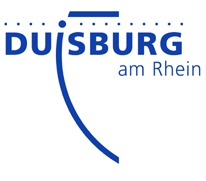Kultur- und Stadthistorisches Museum
This museum tells the story of Duisburg from the early Middle Ages to the modern era and features the folklore of the Lower Rhine. It is home to the Mercator collection as well as historical exhibits of cultural significance and even Inspector Schimanski’s legendary jacket.
Exhibits on the city’s history
The Kultur- und Stadthistorisches Museum is situated between Burgplatz and the Inner Harbour, just by the old city wall. When Duisburg became the Ruhr Area’s breadbasket 100 years ago, the building was part of the Rosiny mill.
The museum tells the city’s story in two rooms: the first begins in the Ice Age before embracing the Teutons and Romans and ending up in the Middle Ages, when Duisburg was an important place of trade. Then industrialisation begins: coal, steel, the railway and ports. The exhibition shines a spotlight on the city in the twentieth century, its infrastructure and everyday life, the first department stores and the construction of the theatre and Tonhalle. An image of the bombed-out city centre shows the aftermath of the Nazi years, before moving onto the prosperous years of the economic miracle known in Germany as the Wirtschaftswunder.
The Centre for Commemorative Culture, Human Rights and Democracy was established by the city archive and the museum. The team now offers guided tours of the centre as well as holding events and presenting exhibitions.
Exhibits on cultural history
The Köhler-Osbahr collection of coins and antiques is an outstanding assortment of currencies from all over the world and ethnohistorical artefacts from every culture. The objects from Central and South America have already been seen in major exhibitions. There are plans to focus on the ancient Near East, ancient Greece and Hindu India over the coming years.
The heavyweight of the museum in terms of culture and history is the ‘Mercator Treasure Chamber’, which received an impressive redesign in 2012, Mercator’s anniversary year. The cartographer Gerhard Mercator (1512–1594) produced the best globes and atlases of his day. He is now known as the founder of modern navigation thanks to his world map for seafarers. Duisburg’s Mercator collection is considered to be one of the most important in Europe.
